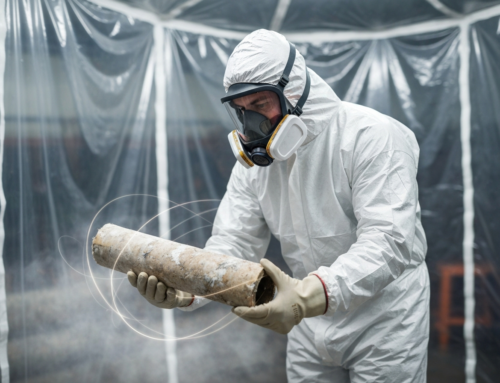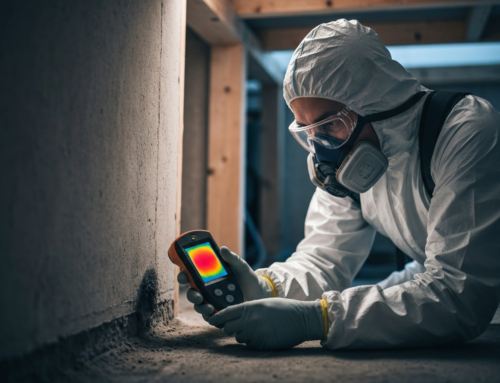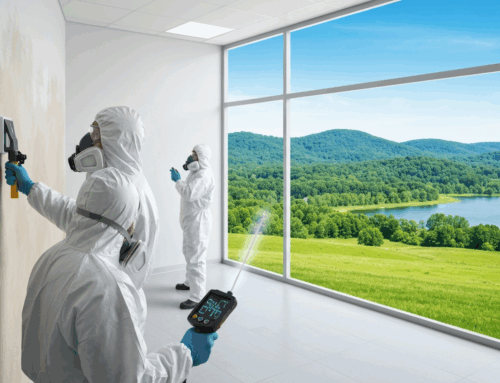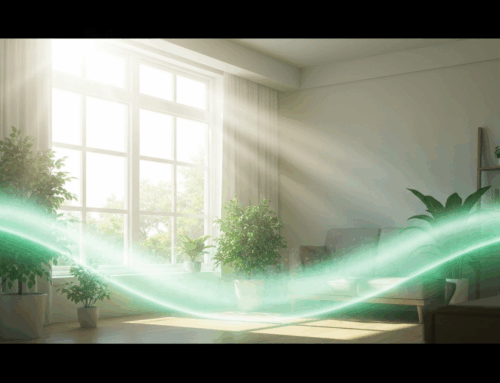Crawl spaces are often out of sight, out of mind, but for homes in South Carolina, this neglected area can become a breeding ground for mold. The humid climate of the Palmetto State, combined with common issues like poor ventilation and moisture intrusion, creates the perfect environment for mold to thrive. If you’re concerned about your home’s air quality or suspect mold growth, understanding the critical need for Crawl Space Mold Removal SC is the first step toward a healthier living environment.
Understanding Mold Growth in South Carolina Crawl Spaces
Mold is a type of fungus that reproduces through microscopic spores. These spores are naturally present in the air, both indoors and outdoors. However, they only begin to colonize and grow when they land on a damp surface with an available food source. In South Carolina, the challenge intensifies due to the state’s warm, often highly humid climate. Elevated humidity levels are a significant contributing factor to mold growth, especially in enclosed, unconditioned spaces like crawl spaces.
Factors that frequently lead to mold development in SC crawl spaces include:
- High Humidity: South Carolina’s climate means outdoor humidity often translates to indoor humidity, particularly in crawl spaces that aren’t properly sealed or dehumidified.
- Ground Moisture: Water seepage from the surrounding soil, especially after heavy rains, can introduce significant moisture.
- Plumbing Leaks: Even small, undetected leaks from pipes running through the crawl space can provide a constant moisture source.
- Poor Ventilation: Inadequate airflow prevents moisture from escaping, leading to condensation and stagnant, damp air.
- Organic Food Sources: Wood joists, insulation, cardboard boxes, and even dust provide ample food for mold to feed on once moisture is present.
These combined conditions make crawl spaces a prime location for mold to proliferate, often unnoticed until the problem becomes severe.
Warning Signs You Need Crawl Space Mold Removal SC
Identifying mold in your crawl space early can prevent more extensive damage and potential health issues. Since crawl spaces are not frequently visited, recognizing the warning signs is crucial:
- Musty Odor: This is often the most common and earliest indicator. If you notice a damp, earthy, or stale smell emanating from your crawl space, or even spreading into your living areas above, mold is highly likely present.
- Visible Growth: While less common in early stages, you might eventually spot discoloration or fuzzy patches of mold on wood, insulation, or dirt. Mold can appear in various colors, including black, green, white, or even orange.
- Increased Allergy or Respiratory Symptoms: Occupants of the home may experience unexplained increases in allergy symptoms (sneezing, runny nose, itchy eyes), coughing, wheezing, or other respiratory issues, especially when at home.
- Warped Flooring or Sagging Ceilings: Severe moisture issues, often accompanied by mold, can lead to structural problems in the subfloor directly above the crawl space.
- Pest Infestations: Damp, moldy environments are attractive to pests like termites and cockroaches. An unexplained increase in pests might indicate underlying moisture problems.
- Condensation: Noticeable condensation on pipes, ducts, or other surfaces within the crawl space indicates high humidity.
If any of these signs are present, it’s imperative to investigate further. Delaying action on crawl space mold removal in SC can exacerbate the problem and lead to more significant complications.
The Dangers of Neglecting Crawl Space Mold
Ignoring mold in your crawl space carries significant risks, impacting both the structural integrity of your home and the health of its occupants. Mold doesn’t just stay confined to the crawl space; its spores can become airborne and enter your living areas through cracks, vents, and even porous building materials.
The primary dangers include:
- Health Risks: Exposure to mold can trigger allergic reactions, asthma attacks, and respiratory problems in sensitive individuals. Symptoms can range from nasal stuffiness and skin irritation to more severe issues like lung infections. For more information on potential health impacts, consult resources like the EPA’s guide on mold and health.
- Structural Damage: Mold feeds on organic materials like wood, drywall, and insulation. Over time, extensive mold growth can weaken wooden structures such as floor joists and subflooring, potentially compromising the stability of your home.
- Decreased Indoor Air Quality: Mold spores circulating throughout your home can degrade indoor air quality, leading to persistent odors and an unhealthy living environment.
- Reduced Property Value: A home with an active mold problem, particularly in the crawl space, will likely deter potential buyers and can significantly reduce the property’s market value.
- Pest Attraction: Damp, moldy crawl spaces are ideal habitats for pests like rodents, insects, and termites, creating additional problems that require remediation.
Addressing mold promptly is essential to protect your family’s health and your property investment.
Professional Approaches to Effective Mold Eradication
While small patches of surface mold might be manageable with DIY methods, extensive mold growth in a crawl space almost always requires professional intervention. The confined nature of crawl spaces, coupled with the potential for hazardous mold types and hidden moisture sources, makes professional Crawl Space Mold Removal SC the safest and most effective solution.
Piedmont Quality Air employs experienced and trained professionals who utilize specialized equipment and adhere to strict safety protocols for comprehensive mold remediation. Our approach typically involves:
- Thorough Inspection and Assessment: Our experts conduct a detailed inspection to identify the extent of the mold infestation and, critically, pinpoint the underlying moisture source. This often involves using moisture meters and other diagnostic tools. For more on professional assessments, read about the process of professional mold inspection in South Carolina.
- Containment: To prevent the spread of mold spores to unaffected areas of your home, the contaminated crawl space is carefully sealed off using specialized containment barriers and negative air pressure systems.
- Moisture Source Rectification: Before any mold removal begins, the source of moisture (e.g., leaks, high humidity) must be completely repaired and controlled. Mold cannot be permanently eradicated without eliminating its water source.
- Mold Removal and Cleaning: Technicians, wearing appropriate personal protective equipment (PPE), use advanced techniques and specialized cleaning agents to safely remove mold from affected surfaces. Porous materials like insulation or drywall that are heavily contaminated are safely removed and disposed of. This process minimizes spore dispersal and ensures thorough cleaning.
- Disinfection and Drying: After mold removal, the area is treated with antimicrobial solutions to inhibit future growth. Industrial-grade dehumidifiers and air movers are used to thoroughly dry the space and reduce humidity levels.
- Air Filtration: HEPA air scrubbers are employed to clean airborne mold spores from the contained environment, ensuring improved air quality.
- Post-Remediation Verification: Once the remediation is complete, a final inspection ensures all mold has been effectively removed and moisture issues are resolved. In some cases, third-party air testing may be recommended to verify air quality.
Professional mold remediation ensures that the problem is not just masked but completely resolved, offering peace of mind and a healthier home. For complex situations, such as post-hurricane damage, an expert approach is even more crucial for effective asbestos and mold remediation in SC.
Long-Term Prevention Strategies for SC Homes
After effective Crawl Space Mold Removal SC, implementing long-term prevention strategies is vital to keep mold from returning. Proactive measures are always more cost-effective and less disruptive than reactive remediation. Here are key strategies for South Carolina homeowners:
- Crawl Space Encapsulation: This is one of the most effective long-term solutions. Encapsulation involves sealing the crawl space with a heavy-duty vapor barrier that covers the ground and foundation walls, isolating the space from the damp earth. This barrier is typically combined with a dehumidifier to control humidity and proper ventilation.
- Regular Dehumidification: Installing a reliable dehumidifier in your encapsulated crawl space is crucial, especially during South Carolina’s humid months. Maintain humidity levels between 30-50%.
- Improve Drainage Around Foundation: Ensure that gutters are clean and direct rainwater away from your home’s foundation. Grading the landscape so that water flows away from the house also helps prevent moisture accumulation around the crawl space.
- Seal All Vents and Openings: Traditional vented crawl spaces can allow humid air and moisture to enter. Sealing these vents (as part of encapsulation) creates a conditioned space that is less susceptible to mold. Consult South Carolina building codes, such as the IRC R408.3 for unvented crawl spaces, for specific requirements.
- Address Leaks Promptly: Regularly inspect plumbing in your crawl space for any signs of leaks or condensation. Fix any issues immediately to prevent water accumulation.
- Proper Insulation: Insulating pipes and ducts in the crawl space can prevent condensation, a common source of moisture.
- Periodic Inspections: Even with preventative measures, it’s wise to conduct periodic visual inspections of your crawl space or schedule professional check-ups to catch any potential issues early.
By taking these steps, homeowners can create a dry, healthy crawl space, significantly reducing the risk of future mold growth and protecting their property for years to come. If you need assistance with professional mold inspection, remediation, or implementing preventive solutions, contact Piedmont Quality Air for a free estimate.
Have questions? Contact us here.






